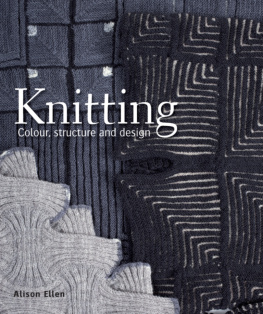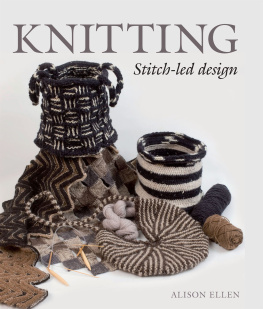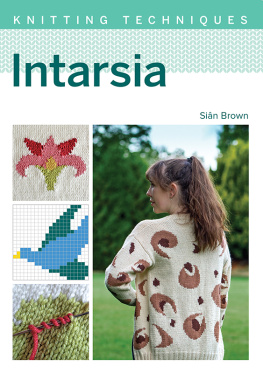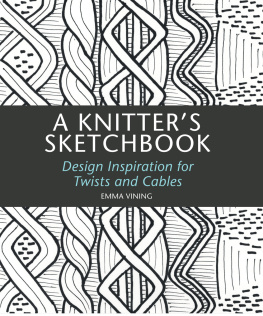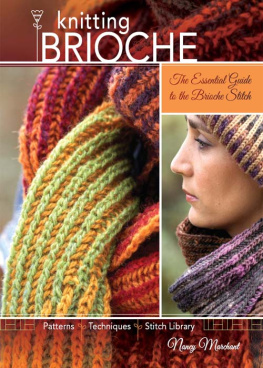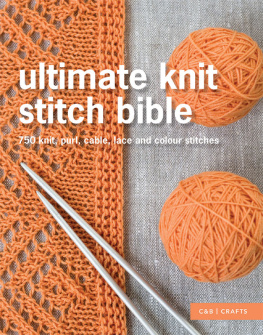
Knitting
Colour, structure and design
Alison Ellen

First published in 2011 by
The Crowood Press Ltd
Ramsbury, Marlborough
Wiltshire SN8 2HR
www.crowood.com
This e-book first published in 2014
This impression 2014
Alison Ellen 2011
All rights reserved. No part of this publication may be reproduced or transmitted in any form or by any means, electronic or mechanical, including photocopy, recording, or any information storage and retrieval system, without permission in writing from the publishers.
British Library Cataloguing-in-Publication Data
A catalogue record for this book is available from the British Library.
ISBN 978 1 84797 728 1
Photographs by Colin Mills
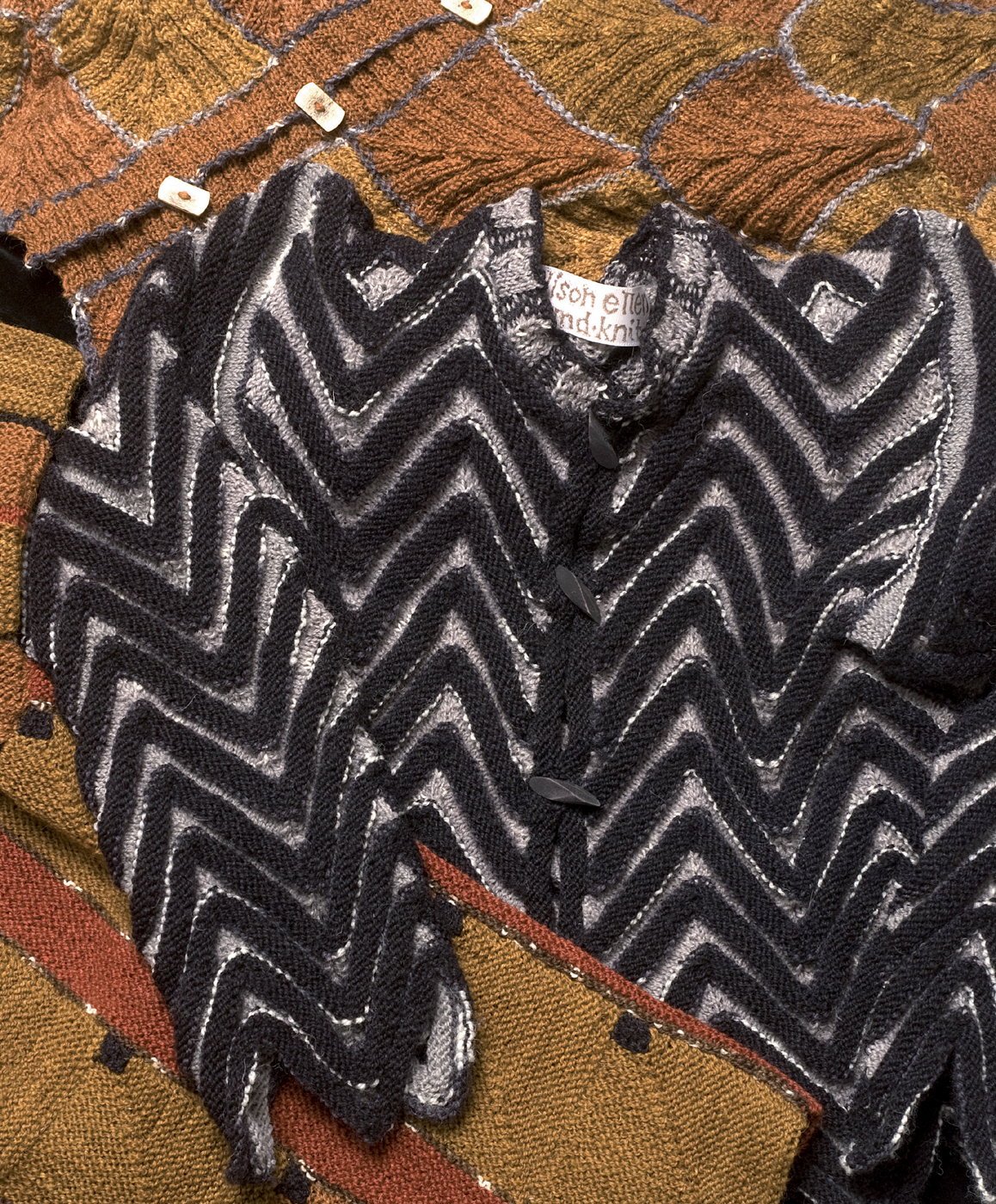
ACKNOWLEDGEMENTS
Going back in time, my textile training at Dartington and Farnham Colleges of Art and their philosophy of teaching material- and technique-led design still remain an important influence. Thanks go to students from my knitting workshops, where I have learnt at least as much as taught. To my knitters: thanks for their skill and patience over the years, their input and enthusiasm, and their willingness to try something new. Particular thanks to Christabel Hedges and Janet Hawkins for checking patterns and helping with instructions and mathematics. Appreciation and thanks to those who knitted pieces for this book and also advised on instructions: Joan Brown, Betty Dobson, Betty Cottle, Tina Fenwick Smith, Christabel Hedges, Angie Harris, Janet Hawkins, Margaret Maher, Margaret Malony, Kneale Palmer, Clare Sampson, Yvonne Tatters. Thanks to Colin Mills for the photos and his inspiration in ways of displaying the work. Last but not least, thanks to my family and to Dan for their enduring support.
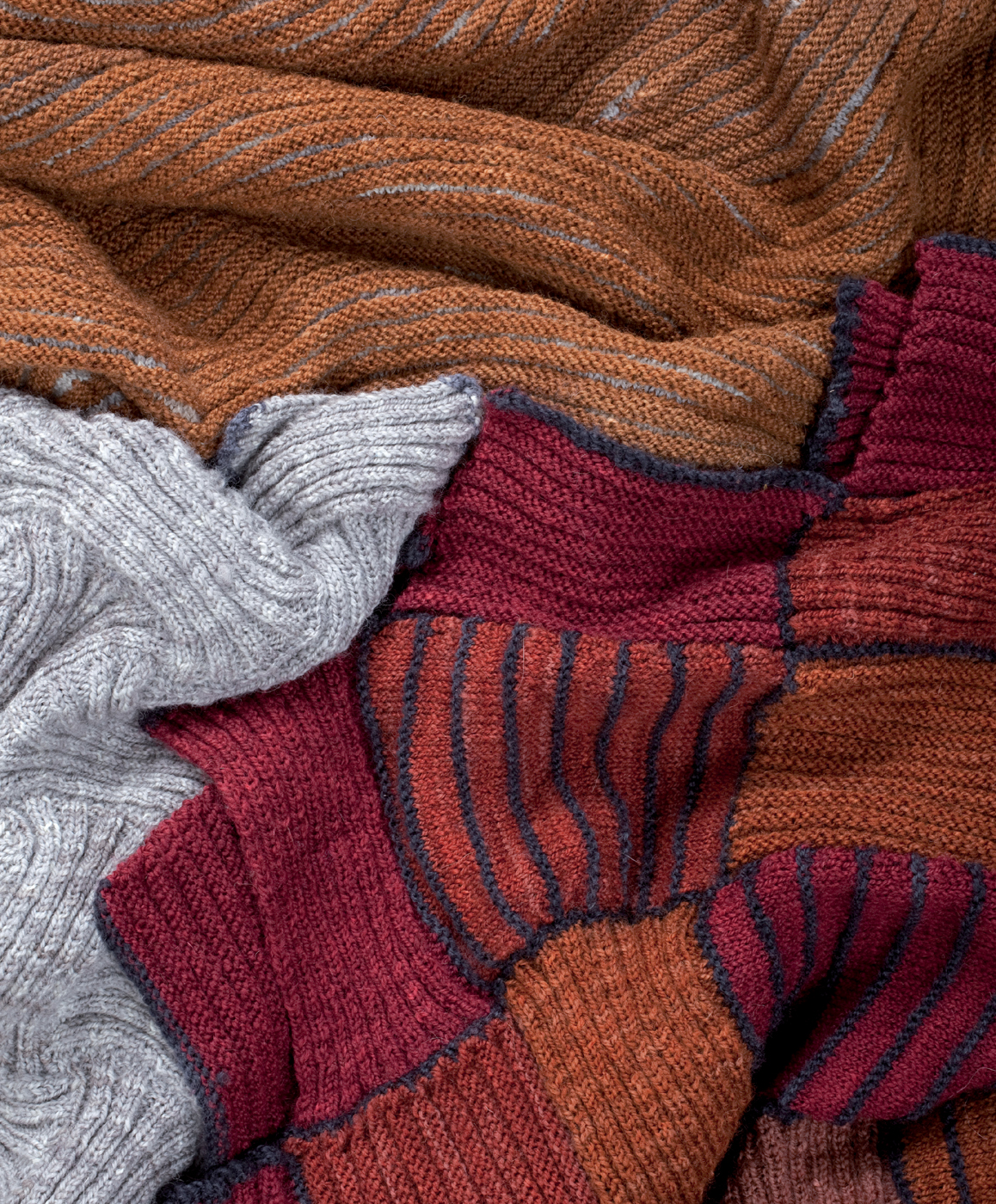
Knitting in entrelac and undulating textured stitches.
INTRODUCTION
Properly practised, knitting soothes the troubled spirit, and it doesnt hurt the untroubled spirit either. When I say properly practised, I mean executed in a relaxed manner, without anxiety, strain or tension, but with confidence, inventiveness, pleasure, and ultimate pride.
Elizabeth Zimmermann, Knitting Without Tears (1971)
This book will look at hand knitting as a way of constructing fabric and three-dimensional shapes in a creative way, rather than following the conventional knitting pattern formula of describing flat, patterned shapes to be joined together by sewing. One of the attractions of knitting by hand is the flexibility and scope of the technique to produce fabric made in any direction from any starting point.
Using knitting needles, it is possible to create almost any shape, either two- or three-dimensional. Knitting can make a fabric beginning from a straight edge, a centre point or a corner, and can create something flat, textured, distorted, patterned, rough or smooth. By increasing and decreasing the number of stitches it can become sculptural, with the freedom to shape as you go. If you knit in the round, using a set of double-ended needles or a circular needle, all these effects can be made in a tubular form, again shaping within the spiral, tubular construction. Developing the idea of free shaping further, stitches can be picked up from any edge or surface, and off you go again in a different direction, with no sewn seams needed. There are limitless possibilities.
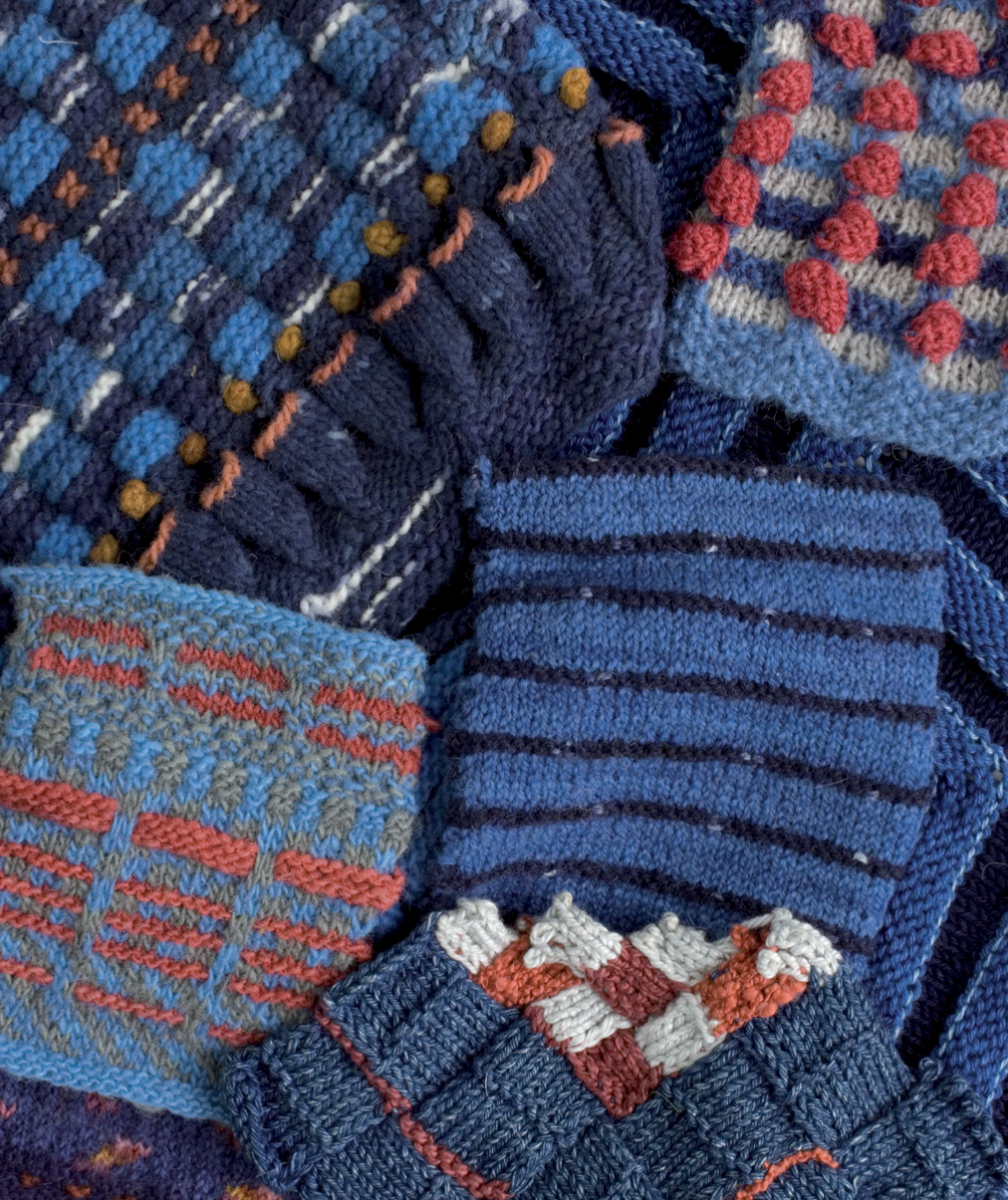
Samples of bobbles, stripes, zigzags, entrelac and slip stitches.
Pieces knitted with no seaming, using sets of double-ended needles when necessary. All the techniques are listed in Chapters 2 and 6.
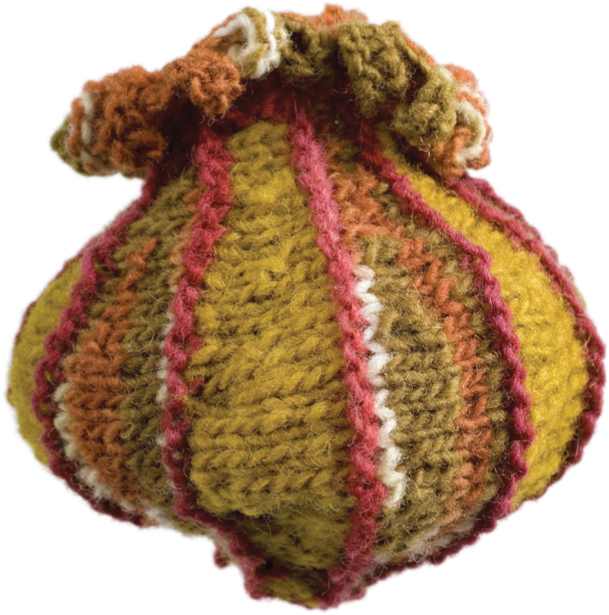
Pod
i) Sideways segments, short rows both ends.
ii) Pick up around one end.
iii) Knit and increase in the round.
iv) Cast off with wiggles (exaggerated picot).
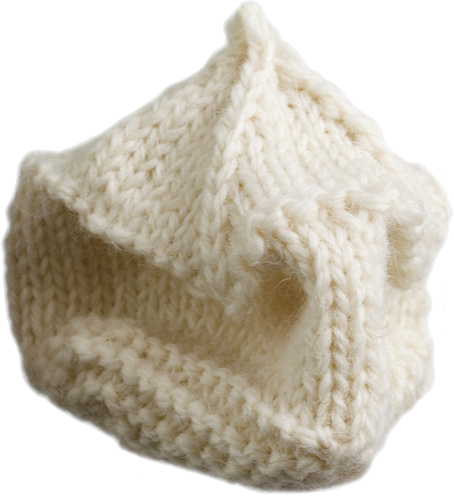
Pointed cube shape
i) Mitred garter st square base.
ii) Pick up sts all round, knit.
iii) Divide sts into 4, decreasing at corners to pointed top.
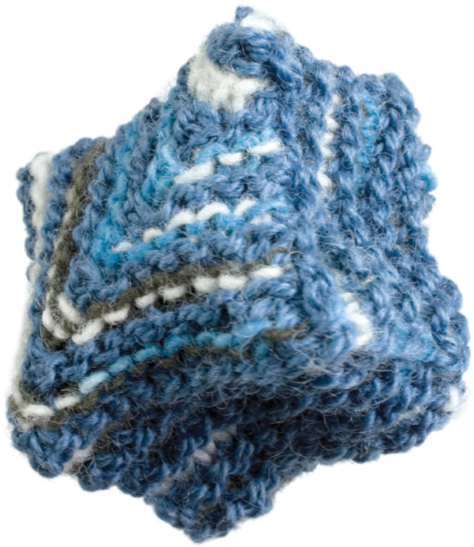
Blue cube
i) Mitred square.
ii) Pick up round edges and purl in the round, twisted knit st at corners.
iii) Mitred square, working in sts at sides for seamless top.
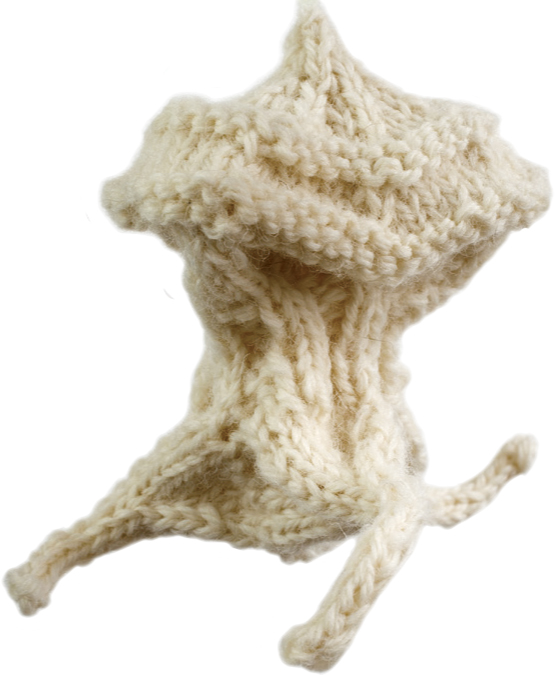
White shape, 3 legs
i) Knit 3-sided shapes, decreasing to I-cords, then picking up sts from bases to attach together.
ii) Pick up all round remaining sts and K2, P2 rib in the round.
iii) Knit, increasing out, then purl ridges.
iv) Decrease inwards to point.
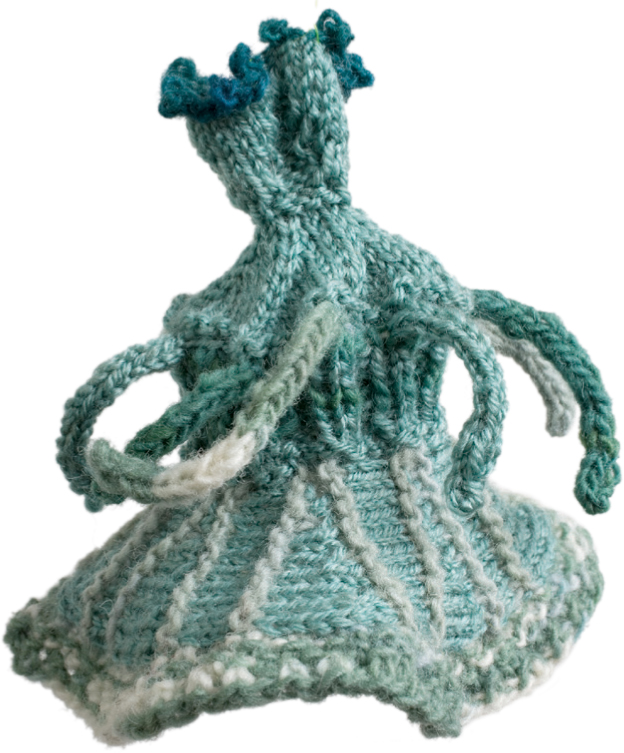
Dancing shape
i) Short-row segments circle.
ii) Pick up stitches and knit border.
iii) Pick up centre and rib a tube.
iv) I-cords.
v) Decrease circle every round.
vi) Frill.
vii) Picot cast-off.
This book will also look at how to use different combinations of stitches to alter the knitted fabric: the drape and weight of it, how it hangs, how stretchy it is, how thick or thin, open or solid. It will encourage thinking of new ways of constructing 3D shapes for clothing, accessories, items for interiors, or simply exploring the possibilities for making larger, sculptural pieces, small intricate pieces, or perhaps knitted jewellery.
My approach is to let the technique and materials lead the way, to experiment and see what happens naturally, even if the results are unexpected. Taking familiar materials and methods in new directions only needs an open mind, so that things going wrong, or making mistakes, turn into positive ways forward. If the knitting wants to behave in a certain way, how can we use it to our advantage? If it wants to curl up at the edges, then let that be developed into something that can be used. If a planned combination of stitches doesnt lie flat, or comes out with one edge shorter than the other, this is discovery that can be used creatively in a design and can then be planned and controlled. The only doubtful element in a knitting surprise is whether it looks accidental or deliberate, a mistake or a statement made with conviction.
Although the world we live in now has become much freer in its approach and there are fewer rules where fashion, clothing and interior design are concerned, so that things that would once have been considered unfinished and raw, or badly made, or old and worn out, are now accepted as a style or look, this does not mean that designing is redundant. It is still the case that a design has to look right and to be carried out with confidence: a dropped stitch, an unravelled edge, asymmetric shaping it all needs to look convincing and intended in order to work as a successful design.
Next page
